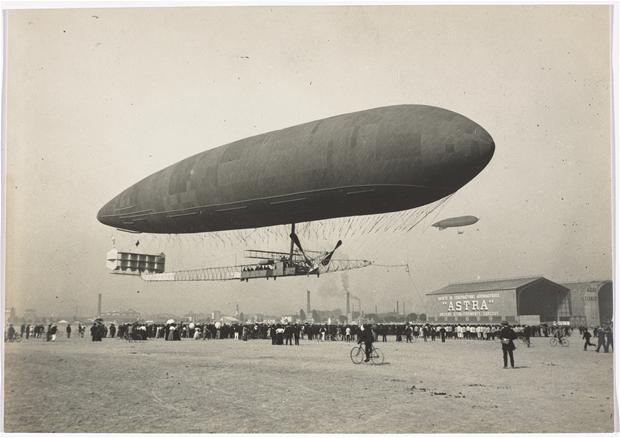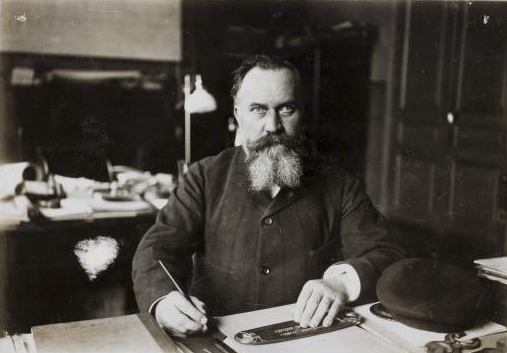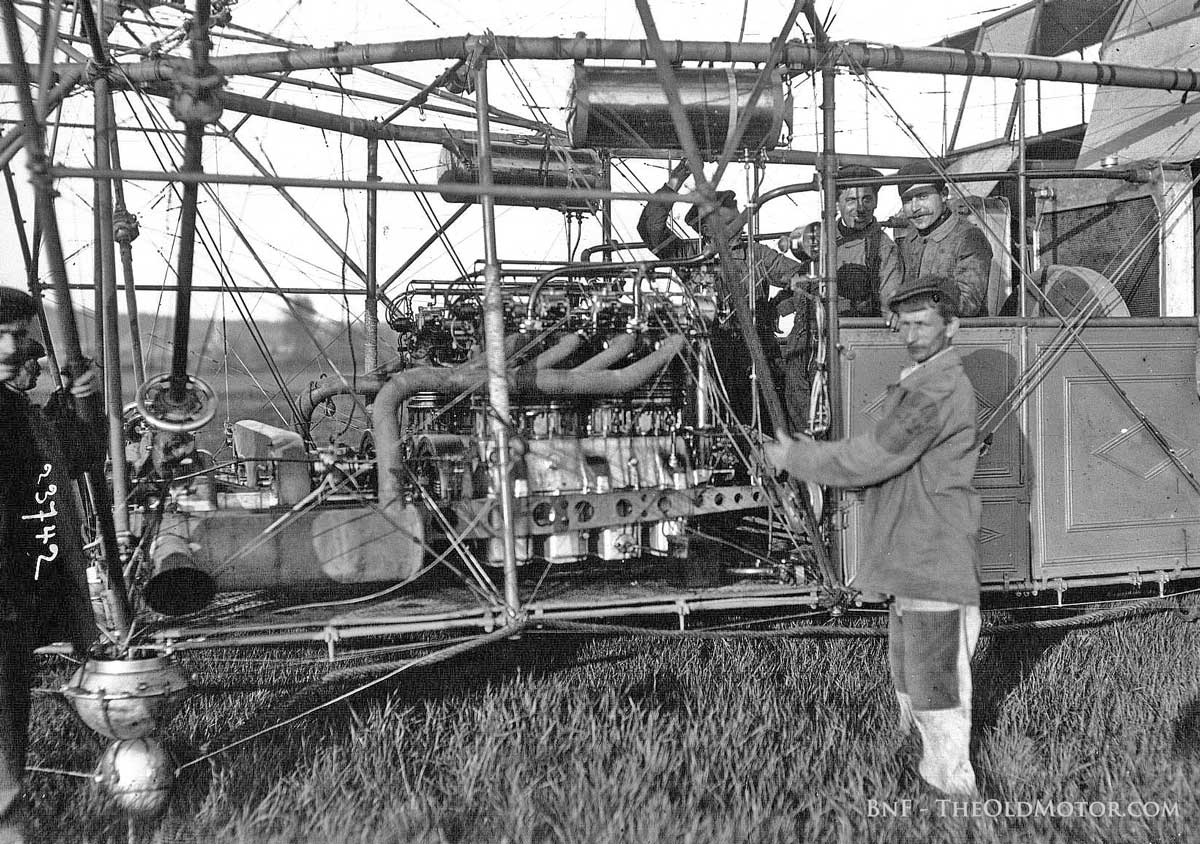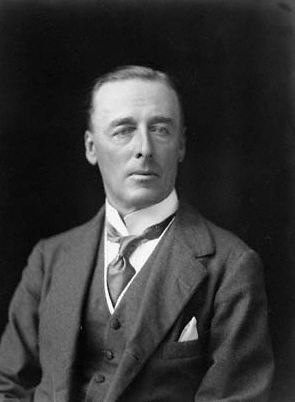
16 October 1910: Maurice Clément-Bayard flew the dirigible, Clément-Bayard No. 2, from the Astra Clément-Bayard airship hangar at La Motte-Breuil, France, to Wormwood Scrubs, England, with six passengers. This was the first crossing of the English Channel by airship. The 244 mile (393 kilometer) distance was covered in less than six hours.
The Chronicle Annual Register reported,
The airship Clément-Bayard No. 2 travelled from near Paris to Wormwood Scrubbs between 6.55 a.m. and 1.25 p.m. Her average altitude was 200–300 metres, her average speed about 60 kil. hourly.
—CHRONICLE OF EVENTS IN 1910, Part II, at Page 33

A contemporary newspaper article described the event:
LONDON, October 16.
The airship Clement Bayard II., carrying seven passengers, has made a remarkable journey from Compiegne, 52 miles to the north-east of Paris, to London, alighting at Shepherd’s Bush, five miles to the west of St. Paul’s Cathedral, in 6 hours, 11 minutes. The distance travelled was approximately 150 miles.
Later.
The Clement Bayard left Compiegne at 7.15 a.m. yesterday, the weather conditions being perfect at the time. Boulogne, about 75 miles distant, was reached three hours later, and then the trip across the Channel was made in three quarters of an hour.
French torpedo-boat destroyers were echelonned across the English Channel, and acted as guides to the airship as far as Folkestone, on the coast of Kent, and 71½ miles east south-east of London.
The Clement Bayard, however, outdistanced each torpedo-boat destroyer in turn. Tunbridge, 42 miles beyond Folkestone, was reached at a quarter past 12, and three-quarters of an hour later St. Paul’s Cathedral, 29½ miles from Tunbridge, was passed, the Clement Bayard on this part of the journey going faster than motor-cars following the airship. The remaining distance to Shepherd’s Bush was accomplished shortly afterwards.
M. Clement Bayard was on board his airship, and the passengers also included Mr. William Harvey De Cros, the Unionist member for Hastings, who represented the British Parliamentary Aerial Committee.
The Clement Bayard I. was completed in April last, and was on the eve of making its departure for London, when the French Government exercised its right, and acquired the airship. In August M. Clement Bayard made several successful flights in the Clement Bayard II., the building of which was started immediately after the French Government acquired the Clement Bayard I. In September, 1909, the “Daily Mail” completed, at a cost of £5,000, a garage for an airship on land belonging to the War office. It was constructed to accommodate the Clement Bayard airship, which was to make the journey through the air from Paris to London. The British Government has the option of purchasing the vessel.
—The Mercury, Vol. XCIV, No. 12,658., Tuesday, 18 October 1910, Page 5, Column 2

Maurice Clément-Bayard was the son of the company’s founder, Gustave Adolphe Clément-Bayard, and would succeed him after his father’s death.
 The airship had been built for the Armée de Terre (the French Army), but because of the very high price, ₣200,000, it was not accepted. It was then sold to the British War Office for ₤18,000, more than twice the price the builders had offered to the French government. The British newspaper, The Daily Mail, contributed the cost of building an airship hangar.
The airship had been built for the Armée de Terre (the French Army), but because of the very high price, ₣200,000, it was not accepted. It was then sold to the British War Office for ₤18,000, more than twice the price the builders had offered to the French government. The British newspaper, The Daily Mail, contributed the cost of building an airship hangar.
After arriving in England, Clément-Bayard No. 2 was deflated for transport to another location. The airship was damaged in transit and was never repaired.
Clément-Bayard No. 2 was 76.5 meters (251 feet) long, with a diameter of 13.2 meters (43 feet). The dirigible had a volume of 6,500 cubic meters (229,545 cubic feet). It was powered by two water-cooled, normally-aspirated, 1,590.75-cubic-inch-dispalcement (26.068 liters) Clément-Bayard four-cylinder overhead cam engines, which produced 120 horsepower, each. These turned two, two-bladed, fixed-pitch laminated wood propellers with a diameter of 6 meters (19 feet, 8 inches) at 350 r.p.m.
According to an article in American Machinist,
. . . This engine is a four-cylinder, vertical, water-cooled motor, of the latest Clement racing type. The cylinders are cast separately and are copper jacketed; have a bore of 7.48 inches and a stroke of 9.05 inches[1,590.75 cubic inches, 26.07 liters], giving a horsepower estimated at over 200. The valves are mechanically operated and placed in the cylinder head. A magneto is used for ignition. The weight is 1100 pounds [499 kilograms].
There will be two of these motors used in the new Clement-Bayard airship being constructed for the British government; each motor having a propeller of its own, although when desired, both motors can run one propeller, or one motor can run two propellers.
—American Machinist, Volume 33, Part I, 7 April 1910, at Page 645

The airship was debated in the British Parliament, with a question asked by Mr. Herbert Pike-Pease, M.P. (later, 1st Baron Daryngton): “May I ask the right hon. Gentleman if he thinks the action of the War Office in regard to this airship was justified? If the airship was fit for service, why was it not used, and if it was not fit for service, why was it purchased?“

Colonel John Edward Bernard Seely, D.S.O., (Later, 1st Baron Mottistone, C.B., C.M.G., D.S.O., T.D., P.C., J.O., D.L.), the Secretary of State for War, replied, “I think part of the last two supplementary questions is answered in some of the replies I have just given. Of course, it is the fact that the envelope of this balloon leaked so badly that it would have been very costly to have inflated it. No doubt mistakes were made on both sides, by hon. Gentlemen on both sides of the House, as well as by my Department, but we have not made half as many mistakes in this matter as our neighbours.“
Mr. Pike Pease then asked, “Was not the leakage known to the War Office before the ship was purchased?“
Colonel Seely answered, “It was before my time. There was a strong Committee of this House engaged in those transactions, and I understand they thought the airship was serviceable, and I suppose we thought it was when it was taken over. Mistakes must be made in a new matter of this kind. We have not made very many mistakes of a large kind in the matter of airships. We have been signally successful.“
Earlier in the debate, Colonel Seely stated that, “The engines are still available and are at the aircraft factory.“
—The Parliamentary Debates, 30 April 1913, at Page 1161.
© 2018, Bryan R. Swopes
I am friends with Robert G Sowers who flew the B-58 Hustler for Operation Heat Rise in 1962. I appreciate the article you wrote on his Bendix Trophy race, and think it is important that he and his accomplishments are not forgotten. Most people don’t know that he went on to become the 1st instructor pilot for the SR-71, and then flew Charlie Pride to all his concerts for 15 years. Amazing and humble guy to talk to. He turned 89 in July and is still very active. If you would like recent pictures of him or if you need any additional info on him please feel free to email me. [email protected]
Thanks, Larry